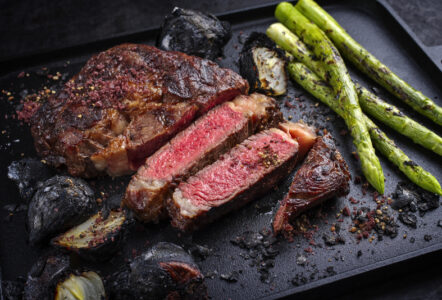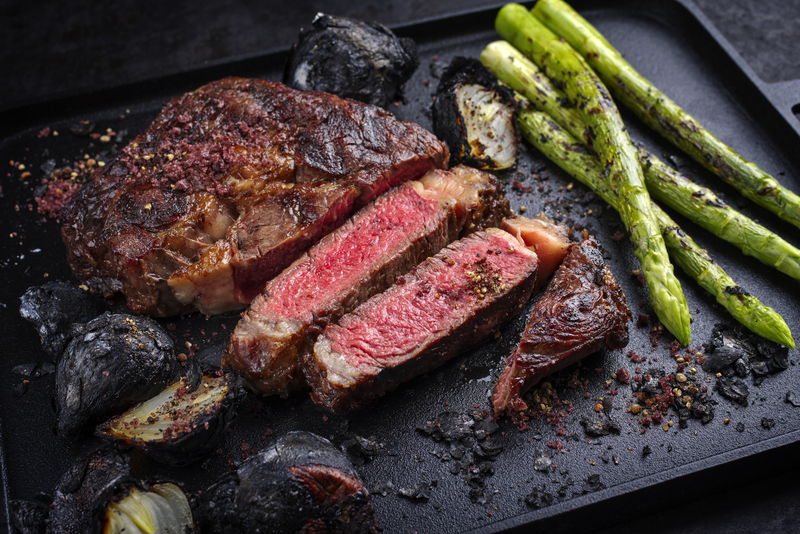 Choosing the right charcoal can significantly affect the flavor and cooking experience when grilling steaks.
Choosing the right charcoal can significantly affect the flavor and cooking experience when grilling steaks.
For the best results, lump charcoal stands out as the preferred choice due to its natural flavor and ability to reach high temperatures quickly.
Many grill enthusiasts appreciate lump charcoal for its minimal additives, which allows the pure taste of the meat to shine through.
Additionally, hardwood lump charcoal burns hotter and more evenly than briquettes, making it ideal for achieving the perfect sear on a steak.
While briquettes are more convenient and burn longer, they often contain binders and fillers that can interfere with the steak’s flavor.
Exploring different charcoal options can enhance any grilling experience, especially for steak lovers looking to elevate their culinary skills.
Types of Charcoal for Grilling
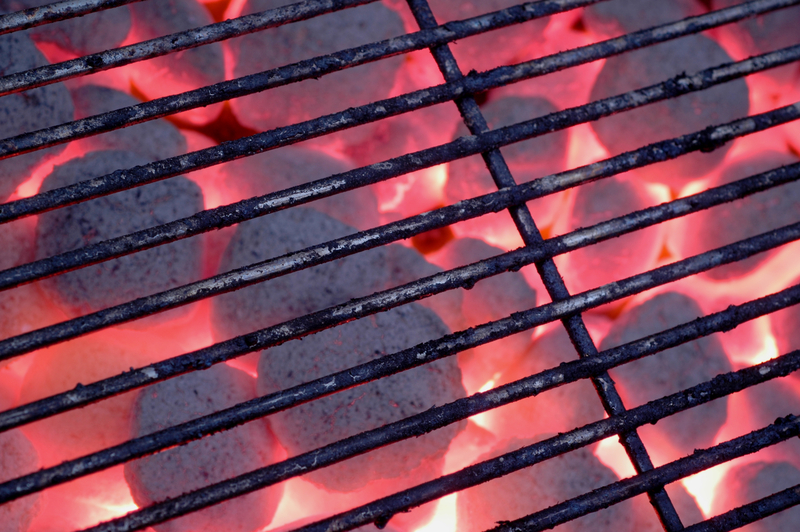
Choosing the right type of charcoal can significantly impact the flavor and cooking performance.
Different types of charcoal offer varying burns, heat outputs, and flavor profiles, making each suitable for specific grilling needs.
Lump Charcoal
Lump charcoal is made from natural hardwoods that have been burned down to remove moisture and impurities.
It lights quickly and burns hotter than briquettes, providing a strong heat source perfect for searing steaks.
Key characteristics include:
- Heat Output: Can reach temperatures of up to 1,200°F, ideal for high-heat grilling.
- Flavor: Imparts a more authentic wood-fired flavor to the food.
- Ash Production: Produces less ash compared to briquettes, making cleanup easier.
However, it can burn faster, requiring more frequent replenishing during longer cooking sessions.
Lump charcoal is often favored by purists seeking a straightforward grilling experience.
Briquettes
Briquettes are made from compressed charcoal dust and other binding agents.
They are designed to provide a consistent burn and stable heat over longer cooking times, making them a popular choice for many grillers.
Highlights include:
- Uniform Size: Provides consistent heat distribution.
- Heat Duration: Burns for a longer time, suitable for slow cooking and smoking.
- Flavor: May impart a slightly earthy taste, depending on the additives used.
Briquettes are excellent for those who prefer less hands-on management during cooking.
While they can produce more ash, many brands now offer low-ash options, balancing convenience with flavor.
Binchotan
Binchotan, or white charcoal, is a traditional Japanese charcoal made from oak.
It undergoes a unique carbonization process, resulting in a high-quality fuel source that offers distinct properties.
Key features include:
- High Heat: Burns at very high temperatures (up to 1,800°F), making it ideal for quick searing.
- Long-lasting: Has a slow burn and maintains heat for extended periods.
- Clean Burning: Produces minimal smoke or odor, offering a pure grilling experience.
Binchotan is often favored for its ability to enhance the flavor of meats without overpowering them.
It’s a premium choice, often used in gourmet settings or by those looking for a unique grilling flavor profile.
Factors to Consider
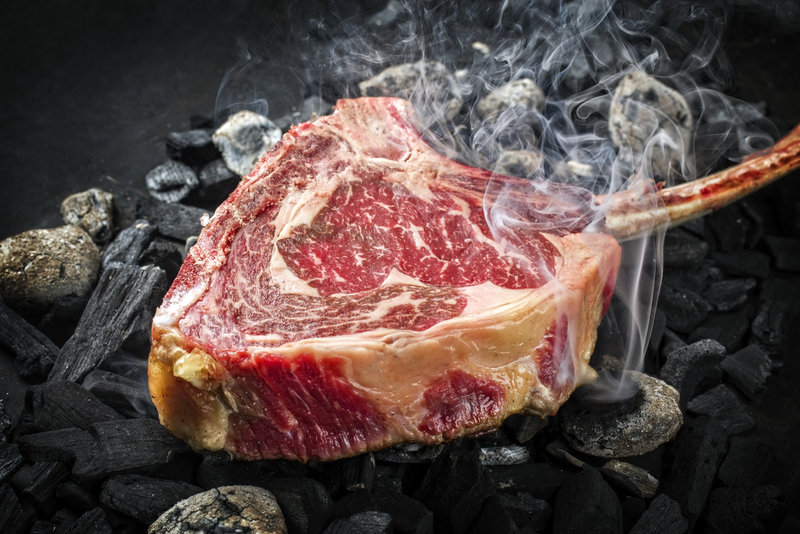
Selecting the right type of charcoal for grilling steaks involves understanding several key factors.
Considering heat intensity, burn time, smoke production, and flavor can significantly influence the outcome of the grilling experience.
Heat Intensity
Heat intensity is crucial when grilling steaks.
The best charcoal for high-heat cooking is lump charcoal.
It ignites quickly and reaches temperatures around 1,000°F.
For those looking for sustained heat, briquettes are a valid choice.
They burn slowly and evenly, making them ideal for long grilling sessions.
When aiming for a perfect sear on a steak, high heat is essential.
Lump charcoal achieves this quickly, while briquettes require more time to reach the same peak temperature.
Burn Time
Burn time affects how long the charcoal lasts during grilling.
Lump charcoal typically has a shorter burn time, around 1-2 hours, depending on the cooking method and airflow.
Briquettes usually last longer, around 4-6 hours, making them suitable for extended cooking times.
Those who wish to grill larger cuts of meat or prepare multiple steaks at once will benefit from this feature.
Understanding the timing is essential to avoid running out of heat midway through grilling.
Knowing the burn time helps in planning and ensuring that the charcoal meets specific cooking needs.
Smoke Production
Smoke production influences the flavor profile of grilled steaks.
Different types of charcoal produce varying levels of smoke.
Lump charcoal has a cleaner burn and produces less ash and smoke, which can highlight the natural flavors of the steak.
This characteristic makes it popular among chefs who prefer a more refined taste.
Briquettes, on the other hand, often contain additives that can produce a more robust smoke flavor.
While this can enhance the taste, it may also result in unwanted flavors if not managed properly.
Flavor
The flavor imparted to steaks is one of the most important factors.
Lump charcoal typically provides a more authentic, wood-like flavor due to its natural composition.
Briquettes can sometimes add a chemical taste due to the fillers and binders used in their production.
For those who prioritize flavor, lump charcoal’s characteristics make it an appealing choice.
The type of wood used in some briquettes can also influence flavor.
Options like hickory or mesquite briquettes offer additional smoking notes but may not suit everyone’s palate.
Understanding the flavor dynamics of charcoal helps grillers select the best option for their desired steak profile.
Recommended Charcoal Brands
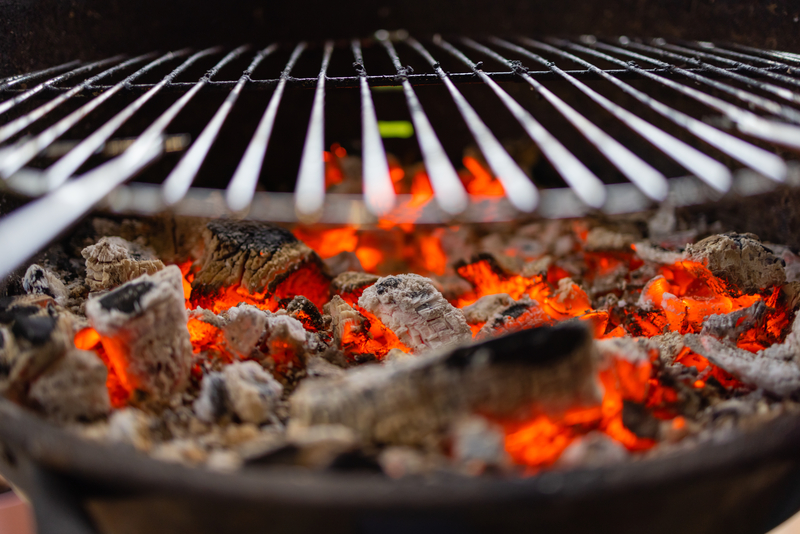
Choosing the right charcoal can significantly impact the quality of steak grilled.
Here are three reputable brands that stand out for their performance and flavor enhancement.
Jealous Devil All Natural Hardwood Lump Charcoal
 Jealous Devil All Natural Hardwood Lump Charcoal is made from dense South American hardwoods.
Jealous Devil All Natural Hardwood Lump Charcoal is made from dense South American hardwoods.
It provides a clean burn with minimal ash production.
It lights quickly, reaches high temperatures, and is perfect for searing steaks to perfection.
Known for its consistent performance, it also imparts a subtle, smoky flavor that enhances the taste of grilled meats.
Fogo Super Premium
 Fogo Super Premium is a high-quality lump charcoal made from dense hardwood sourced from Central America.
Fogo Super Premium is a high-quality lump charcoal made from dense hardwood sourced from Central America.
It produces minimal ash and a great, heat output, making it very popular among barbecue enthusiasts.
Fogo’s larger pieces ignite quickly and hold heat effectively, offering flexibility with cooking styles.
The charcoal is designed to deliver an impressive smoky flavor that enhances the taste of steaks while minimizing the time spent managing the grill.
For those looking for a premium grilling experience, Fogo Super Premium delivers consistent results and is ideal for both direct and indirect grilling methods.
Rockwood All-Natural Hardwood Lump Charcoal
 Rockwood All-Natural Hardwood Lump Charcoal is crafted from a blend of Missouri oak, hickory, and maple, offering a mild, smoky flavor ideal for steaks.
Rockwood All-Natural Hardwood Lump Charcoal is crafted from a blend of Missouri oak, hickory, and maple, offering a mild, smoky flavor ideal for steaks.
It burns hot and evenly, giving you precise temperature control while grilling.
Rockwood also focuses on sustainability, using renewable resources and recyclable packaging, making it an eco-friendly choice for barbecue enthusiasts.
Preparing for Grilling
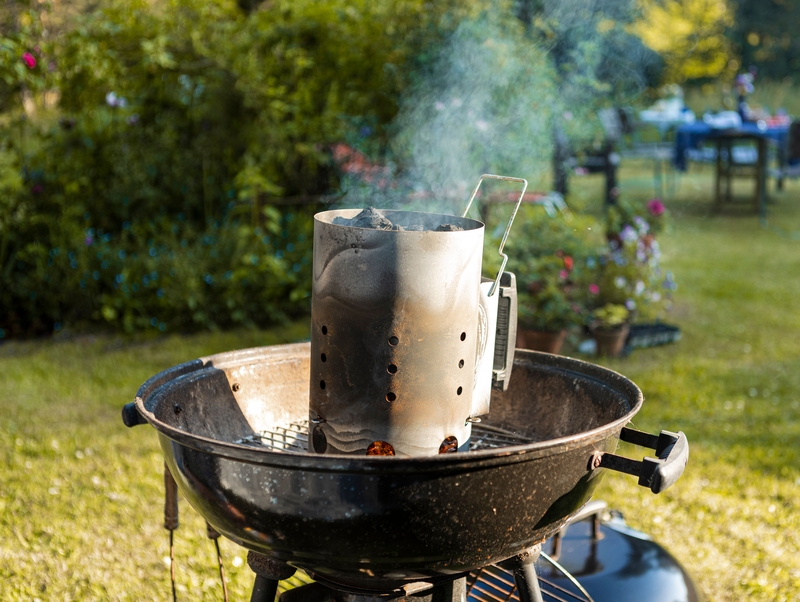
Preparation is crucial for achieving the perfect steak on the grill.
Proper lighting techniques and temperature control significantly affect the quality of the grilled steak.
Lighting Techniques
There are several effective methods for lighting charcoal.
The most popular options include using a chimney starter, lighter fluid, or natural fire starters.
- Chimney Starter: This method is efficient and avoids chemical flavors. Fill the chimney with charcoal and place crumpled newspaper underneath. Light the newspaper, and let the coals ignite fully before pouring them into the grill.
- Lighter Fluid: Although convenient, this method can impart a chemical taste if not used properly. Apply a small amount of lighter fluid directly onto the charcoal, let it soak for a minute, and ignite. Allow the coals to ash over before cooking.
- Natural Fire Starters: Using natural materials like wax-covered wood chips or compressed sawdust is another option. These starters ignite quickly and produce consistent heat without adding unwanted flavors.
Temperature Control
Managing grill temperature is essential for perfectly cooked steaks.
The ideal range for searing steaks is between 450°F to 600°F.
To maintain this temperature:
- Two-Zone Cooking: Set up the grill with a hot zone for searing and a cooler zone for indirect cooking. This allows flexibility in cooking times and doneness levels.
- Using a Grill Thermometer: A reliable thermometer helps monitor the temperature accurately. Inserting it into the thickest part of the steak ensures precise cooking.
- Adjusting Airflow: Controlling the air vents on the grill influences the heat. Opening the vents increases oxygen, raising the temperature, while closing them lowers the heat.
By following these lighting and temperature control techniques, one can create an optimal grilling environment for steak preparation.
Tips for Grilling Steaks
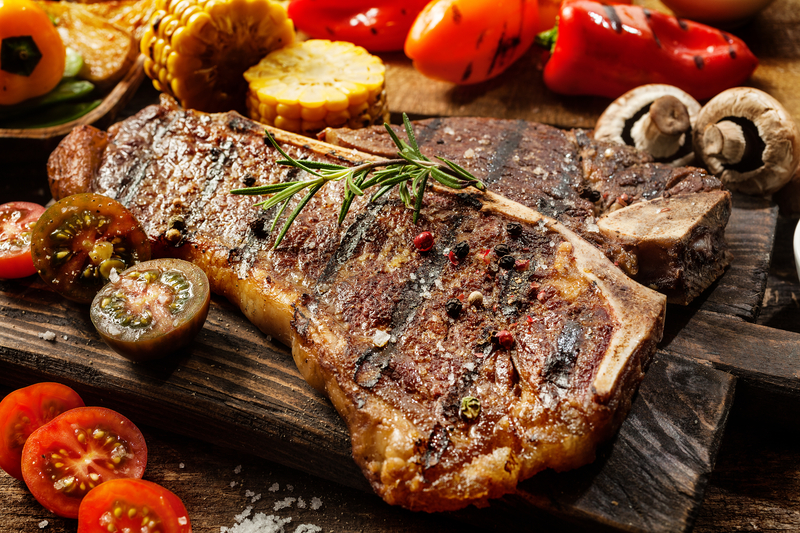
Grilling the perfect steak requires attention to detail in choosing the right cut, seasoning effectively, and understanding cooking times.
Each of these factors significantly impacts the final flavor and texture of the steak.
Choosing Steak Cuts
Selecting the right cut of steak is crucial for grilling success.
Popular choices include ribeye, sirloin, and filet mignon, each offering distinct flavors and textures.
- Ribeye: Known for its marbling, which provides juiciness and rich flavor.
- Sirloin: Leaner than ribeye, it balances flavor and tenderness.
- Filet Mignon: Tender and buttery, it’s ideal for those who prefer a more subtle taste.
Thickness matters too.
A steak that is at least 1 inch thick ensures a good crust while maintaining a juicy interior.
Seasoning the Steak
Proper seasoning enhances the steak’s natural flavors.
A simple approach often yields the best results.
- Salt and Pepper: Generously season with kosher salt and freshly cracked black pepper. This is essential for creating a crust.
- Timing: Season at least 40 minutes before grilling or right before placing it on the grill. This allows salt to penetrate the meat for improved flavor.
For added complexity, consider using marinades or spice rubs.
Ingredients like garlic powder, onion powder, and fresh herbs can elevate the taste.
Always balance flavors to complement the steak, not overpower it.
Cooking Times
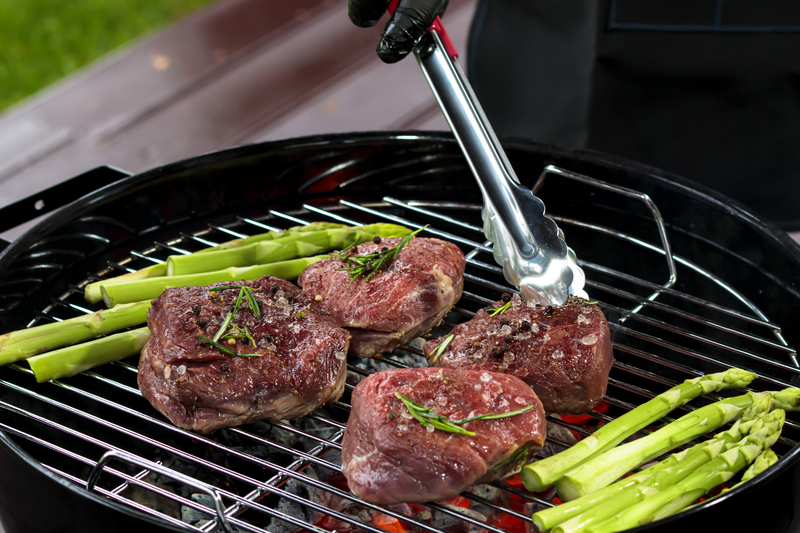
Cooking times vary based on the steak’s thickness and desired doneness.
- Rare: 120-125°F (about 2-3 minutes per side)
- Medium Rare: 130-135°F (about 3-4 minutes per side)
- Medium: 140-145°F (about 4-5 minutes per side)
- Medium Well: 150-155°F (about 5-6 minutes per side)
- Well Done: 160°F and above (more than 6 minutes per side)
Monitoring internal temperature with a meat thermometer is essential for accuracy.
After cooking, allow the steak to rest for at least 5 minutes before cutting.
This step permits juices to redistribute, ensuring each bite remains succulent.
Safety and Maintenance
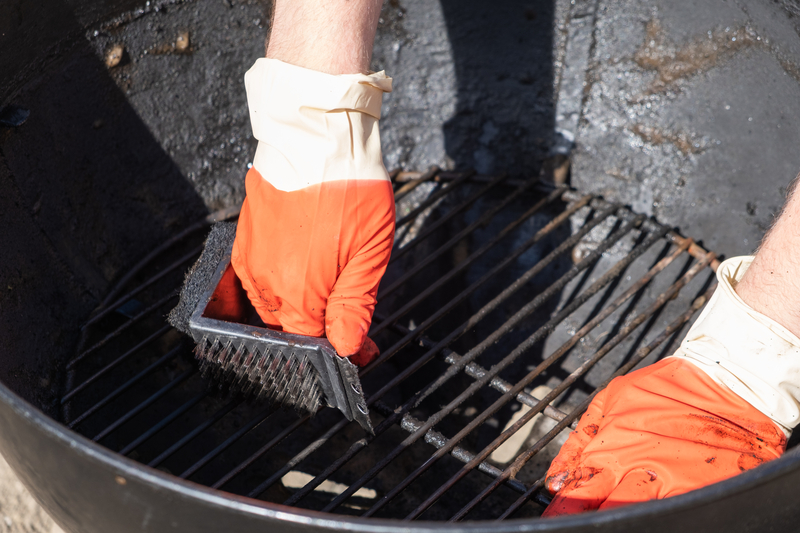
Ensuring safety while handling charcoal and maintaining the grill is crucial for a smooth and enjoyable cooking experience.
Proper methods can prevent accidents and prolong the lifespan of grilling equipment.
Charcoal Handling Safety
When using charcoal, it’s important to follow safety protocols.
Always wear heat-resistant gloves when handling hot coals.
This protects against burns.
Store charcoal in a cool, dry location, away from direct sunlight and sources of ignition.
Keeping it in a sealed container can prevent moisture, which can affect performance.
Use charcoal starters specifically designed for grilling.
Avoid petrol or lighter fluid, as these introduce dangerous chemicals.
Instead, consider using a chimney starter for easier lighting.
Ensure proper ventilation when lighting charcoal.
Carbon monoxide can accumulate, posing risks indoors.
Always light charcoal outdoors in well-ventilated areas.
Grill Cleaning and Care
Regular cleaning of the grill promotes safety and enhances performance.
After each use, remove ash and leftover debris from the grill.
This prevents unwanted flare-ups during cooking.
For thorough cleaning, disassemble parts if necessary.
Use a wire brush to scrub the grates and remove food particles.
Soaking the grates in warm, soapy water can help with stubborn residue.
Inspect the grill for wear and tear.
Check hoses for leaks and replace worn parts immediately to ensure safety.
Additionally, keep the grill covered when not in use to protect it from environmental elements.
Wipe down exterior surfaces with a damp cloth to remove grime.
This maintenance prolongs the life of the grill and enhances its appearance.

